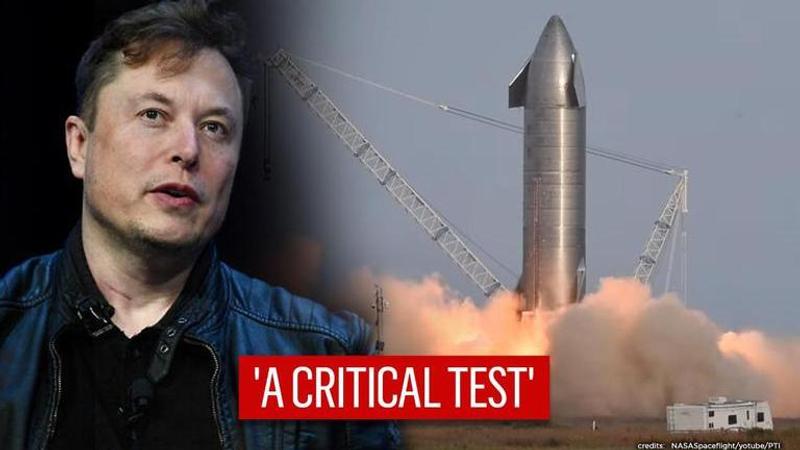Published 15:42 IST, January 7th 2021
SpaceX's Starship fires three raptor engines of SN9 prototype for historic future launch
SpaceX’s next-generation super heavy-lift reusable launch spacecraft’s engines went off one by one producing 71.2MN of thrust during ascent in static-fire test.

SpaceX's Starship conducted a static-fire test of the SN9 prototype for the first time on January 6 from SpaceX's South Texas facilities, near the Gulf Coast. Elon Musk-owned space agency carried out the routine preflight check. Three engines of the spacecraft lit up and the remained on the ground in a test flight for the future missions.
SpaceX’s next-generation super heavy-lift reusable launch spacecraft’s engines went off one by one producing 71.2 MN of thrust during ascent as loads and acceleration on the vehicle were decreased according to a Starship’s release. The SN9 prototype was installed in place of SpaceX’s serial number 8 or SN8, the first high-altitude Starship prototype, which the firm scrapped beginning this month after the SN8 prototype shattered the concrete pad, and exploded into a belly-down orientation. SpaceX is prepping the vehicle for an epic test flight.
NASA’s Spaceflight manager Chris B shared the footage of the Static Fire test. He said that the “Starship SN6 has its mass simulator removed, potentially preparing it to be used as the NASA Human Landing System mockup. Meanwhile, SN9 continues toward launch preparations”. In its routine initial check, the Starship’s vehicle remained at anchor, aiming for the 7.8 miles (12.5 kilometers) lift off over the southern Texas skies.
SN8 was unable to maintain 'fuel pressure'
The Raptor engines attained the maximum height of about 500 feet or 150 meters, and the SN9 prototype did not explode like the SN8 that flipped due to the cold gas thrusters during the vertical landing. According to SPadre, SpaceX’s launch documenting site, Musk declared the landing failure for SN8 as SpaceX expected a high-altitude debut, with Musk himself estimating that the odds of success for SN8 was just about 33 percent. In an interview with Art Technica, SpaceX COO and President Gwynne Shotwell said that the SN8’s launch debut “de-risked [the Starship] program pretty massively,” and the Starship SN8’s methane header tank was unable to maintain the fuel flow (pressure). However, SpaceX's Starship SN9 with an altitude of about 500 toes, or 150 meters and smooth touch down, was one step closer to its flight.
Updated 15:42 IST, January 7th 2021




